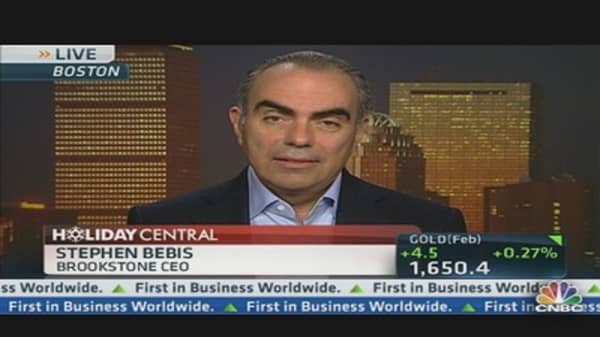The rise in real spending was the largest increase since August 2009 and suggested purchases by consumers were not taking the hit many expected due to growing fears the economy could slip into recession next year.
(Read More: Holiday Spending to Heat Up as Temps Plunge)
Most economists think economic growth will slow in the fourth quarter from the 3.1 percent pace of growth clocked in the prior three months, but Friday's data points to consumers offsetting some of the drag expected from an expected decline in the pace at which companies restock their shelves.
Prices fell 0.2 percent last month and were up 1.4 percent in the 12 months through November, the Commerce Department said.
Gauge of Business Investment Jumps
Durable goods orders rose much more than expected in November, a hint that worries over tighter fiscal policy may not be holding back the factory sector as much as feared.
The Commerce Department said on Friday that non-defense capital goods orders excluding aircraft, a closely watched proxy for investment plans, jumped 2.7 percent last month, the second straight month of solid gains.
Economists had expected so-called core capital goods orders to rise just 0.3 percent. The reading for October was upwardly revised to a 3.2 percent gain from a previously reported 2.9 percent increase.
Shipments of non-defense capital goods orders excluding aircraft, used to calculate equipment and software spending in the gross domestic product report, gained 1.8 percent.
Many economists believe businesses are cutting back on capital spending, wary of automatic government spending cuts and tax increases scheduled to kick in early next year unless the U.S. Congress and the Obama administration can agree on a plan to avert this so-called "fiscal cliff."
(Read More: Boehner's 'Plan B' Is Off the Table...What Now?)
Going over the cliff could drain about $600 billion from an already fragile economy.
Overall durable goods orders rose 0.7 percent in November, with increases posted for machinery, fabricated metal products, and computer and electronic products offsetting a drag from aircraft.
Economists polled by Reuters had forecast orders for durable goods, items from toasters to aircraft that are meant to last at least three years, rising 0.2 percent last month.
Excluding transportation, orders rose 1.6 percent in November. Transport orders were down 1.1 percent. Previously, U.S. manufacturer Boeing reported new orders for its aircraft fell in November to 124 from 152 in the prior month.
New orders for autos jumped 3.5 percent. U.S. auto sales in November raced to a five-year high for that month on a rebound from storm-ravaged October and the need to replace aging vehicles.




